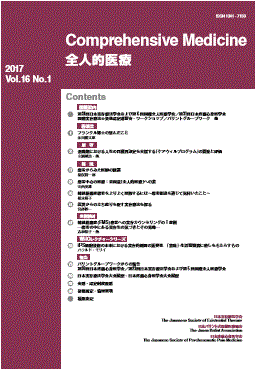Current issue
Displaying 1-9 of 9 articles from this issue
- |<
- <
- 1
- >
- >|
Special Talk
-
2023Volume 21Issue 1 Pages 18-26
Published: March 25, 2023
Released on J-STAGE: April 13, 2023
Download PDF (2862K)
Original Paper
-
2023Volume 21Issue 1 Pages 27-42
Published: March 25, 2023
Released on J-STAGE: April 13, 2023
Download PDF (2857K)
Review Articles
-
2023Volume 21Issue 1 Pages 43-51
Published: March 25, 2023
Released on J-STAGE: April 13, 2023
Download PDF (1067K) -
2023Volume 21Issue 1 Pages 52-61
Published: March 25, 2023
Released on J-STAGE: April 13, 2023
Download PDF (1479K) -
2023Volume 21Issue 1 Pages 62-80
Published: March 25, 2023
Released on J-STAGE: April 13, 2023
Download PDF (2419K) -
2023Volume 21Issue 1 Pages 81-90
Published: March 25, 2023
Released on J-STAGE: April 13, 2023
Download PDF (1090K)
Case Report
-
2023Volume 21Issue 1 Pages 91-100
Published: March 25, 2023
Released on J-STAGE: April 13, 2023
Download PDF (1355K)
WHO Lecture series
-
2023Volume 21Issue 1 Pages 101-109
Published: March 25, 2023
Released on J-STAGE: April 13, 2023
Download PDF (835K)
Report
-
2023Volume 21Issue 1 Pages 110-117
Published: March 25, 2023
Released on J-STAGE: April 13, 2023
Download PDF (898K)
- |<
- <
- 1
- >
- >|
